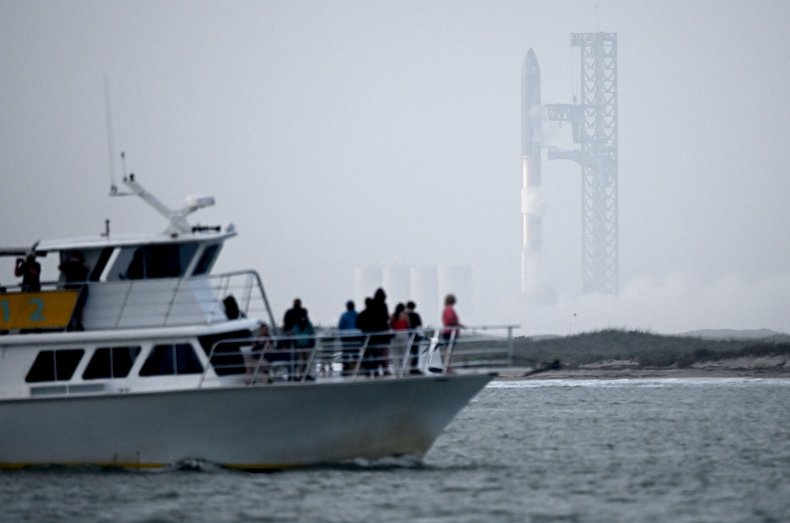ANNA SKINNER

SpaceX's Starship rocket exploded during a test launch Thursday morning.
SpaceX CEO Elon Musk predicted explosion was likely.
The rocket cleared the tower before exploding in the sky after it failed to properly separate.
SpaceX's Starship rocket launched Thursday morning only to, moments later, erupt in a deafening explosion.
The unmanned Starship was the first attempt by SpaceX to launch its spaceship equipped with the Super Heavy booster it needs to reach orbit. Originally scheduled for Monday, the test was delayed by several days after teams discovered issues with a frozen valve. The team previously launched Starship in high-altitude flights in 2020 and 2021, but the rocket has never reached orbit. Thursday's attempt was the first time the Starship was attached to the Super Heavy booster.
Crowds watching the launch cheered when Starship gained momentum and cleared the tower. Later in the launch, the Starship began to spin and didn't properly separate as it was supposed to do three minutes into the flight. When the Starship erupted in a plume of smoke and flame, the crowd cheered and clapped anyway.
Spectators off South Padre Island, Texas, wait for the launch of the SpaceX Starship (L, rear) for a flight test from Starbase in Boca Chica, Texas, on April 20, 2023. The Starship exploded shortly after launch, but the SpaceX team and CEO Elon Musk still deemed it a success.
Many of the high-altitude tests also ended in explosions, though a test that launched in May 2021 successfully completed its mission and landing without exploding. Prior to that test, all Starship high-altitude SN test models had exploded either upon or shortly after touching down.
SpaceX CEO Elon Musk predicted that an explosion was likely on the latest spaceship's first attempt to launch while attached to the Super Heavy booster.
When successful, the rocket is designed to carry out missions to the moon and Mars. It consists of two sections: the Super Heavy rocket booster and the Starship spacecraft.
Musk's prediction proved correct, but the spaceship successfully clearing the tower from which it deployed was cause for celebration. Despite the explosion, the crew deemed the launch a success.
Musk previously said if the rocket cleared the tower, he would consider it a success. The rocket indeed cleared the tower Thursday and, despite the explosion, the onlookers celebrated.
"Congrats @SpaceX team on an exciting test launch of Starship! Learned a lot for next test launch in a few months," Musk tweeted shortly after the explosion Thursday morning, including a series of pictures from the launch. A slew of congratulatory messages followed the tweet.
Congrats @SpaceX team on an exciting test launch of Starship!
Learned a lot for next test launch in a few months. pic.twitter.com/gswdFut1dK— Elon Musk (@elonmusk) April 20, 2023
As for what's next for SpaceX, the company's Twitter account said it would continue working toward the next test.
"Teams will continue to review data and work toward our next flight test," SpaceX tweeted. "With a test like this, success comes from what we learn, and today's test will help us improve Starship's reliability as SpaceX seeks to make life multi-planetary."
If the launch had gone to plan, the Starship would have traveled approximately 150 miles above Earth's surface—entering the altitudes for outer space—and then return to Earth, entering the atmosphere near Hawaii, CNN reported.
No comments:
Post a Comment